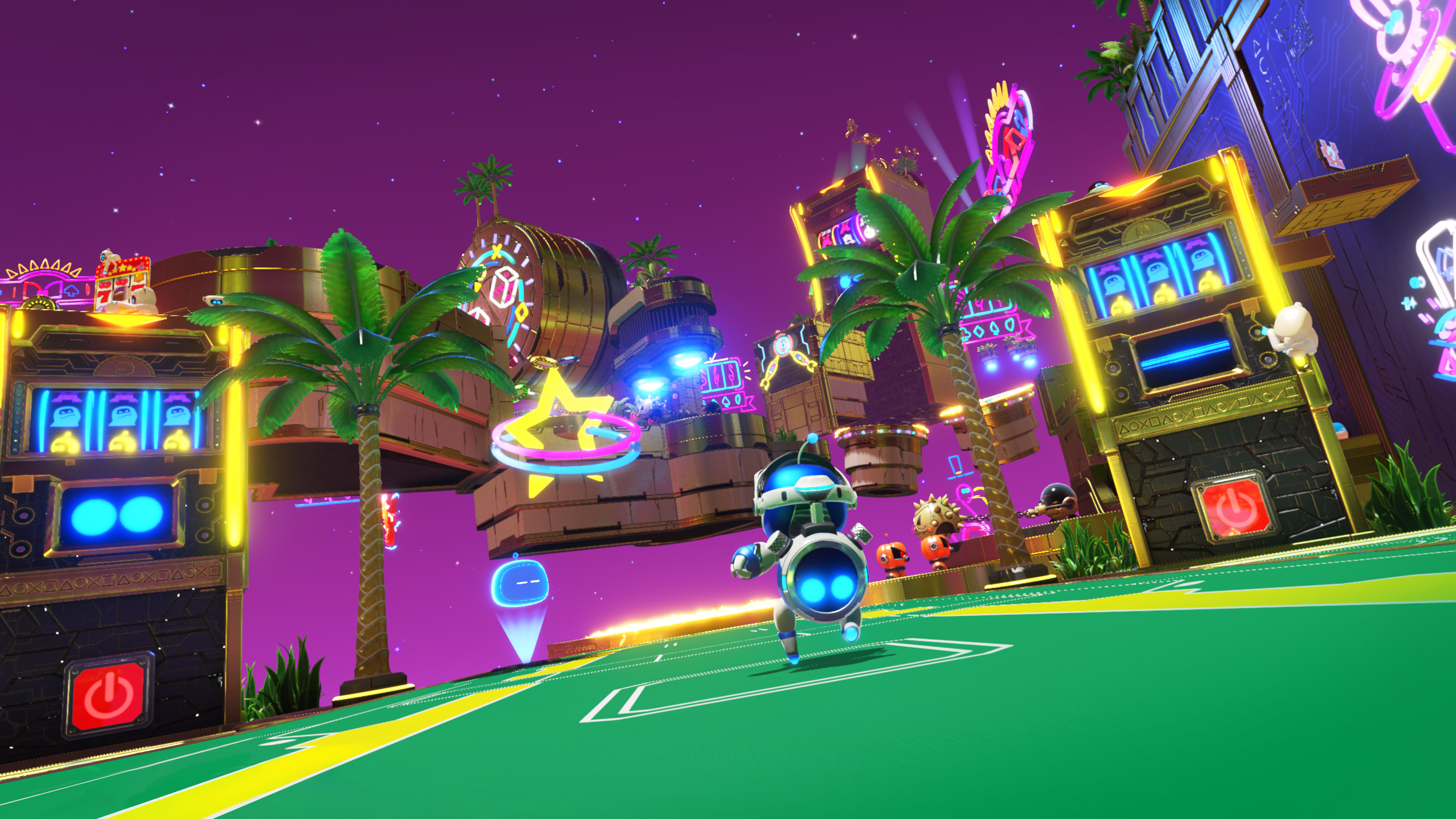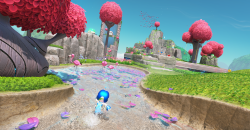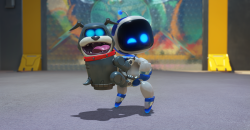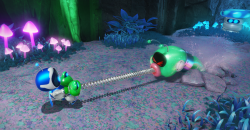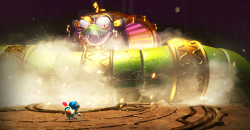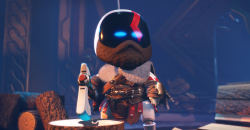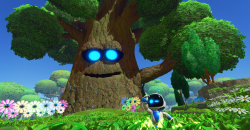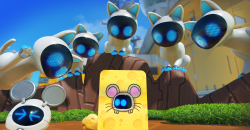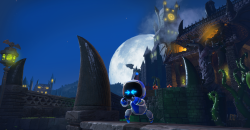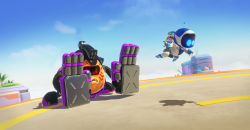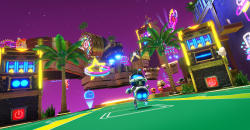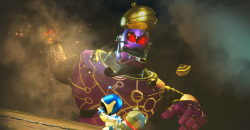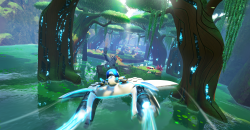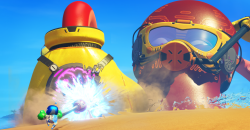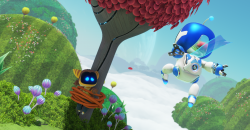
On September 6, 2024, the platform game from developer Team Asobi and publisher Sony Interactive Entertainment was released, which will captivate you in a magical way as you overcome tricky platform passages. I'll tell you more about the PS5 exclusive game in my review.
Plot and controls
The story in Astro Bot begins with Astro Bot and his three hundred companions traveling among the stars in their sober PS5 spaceship when they are forced to crash land by an evil green alien. With his ship broken and missing some vital components, Astro Bot begins his adventure through five galaxies populated by bizarre planets in search of his missing traveling companions and a way back into space. Astro can land on the planets by gliding on the wings of the trusty Dual Speeder (a nimble shuttle in the form of a jet-powered DualSense), and then the magic begins. Admittedly, the story is nothing special and will quickly slip into the background, but that's not really anything new in platformers. The first thing you'll notice, however, is the control system, which is precise and intuitive, enhanced by haptic feedback. One of the PS5 controller's signature features, which is unfortunately treated extremely superficially by most developers, is finally being properly exploited by Team Asobi, and with amazing results.Every terrain you tread returns an inexplicably recognizable and natural feel to your fingertips, every object you lift or pull imparts resistance and weight, and diving underwater in a video game has never been so convincing. You have to try it to believe it. Astro Bot jumps, shoots down enemies and hovers for brief moments with small thrusters under his feet in best Tetsuwan Atom fashion, which also serve as a defense system, and can increase his mobility by carrying robotic animals on his back. This allows him to sprint at breakneck speed to smash walls and make baddies bite the dust, hold on to handles like in good old DK: King of Swing or even slow down time for a few precious moments.
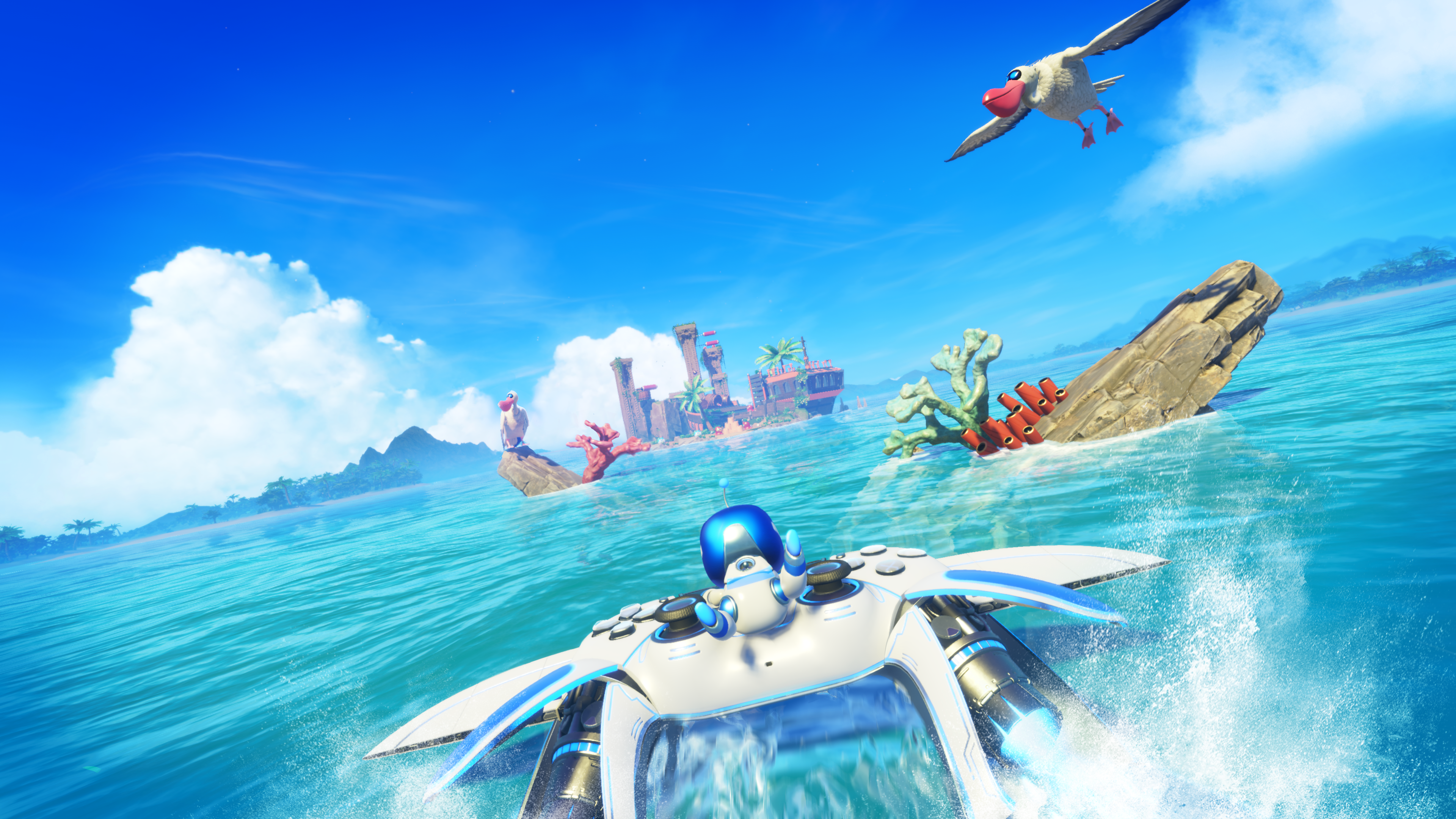
Great level design and pioneers of SONY gaming entertainment
The level design is quite something, with the layout of each level carefully built around the initial power-up granted, an element that adds both variety and personality to the adventure. Progression between enemies and platforms is mostly linear, but the beautiful landscapes conceal a whole host of hidden areas that tempt you to stray from the main path in search of secrets, which in turn are essential to completing the game. Hidden on each planet are a certain number of robots, puzzle pieces and mysterious gaps, a topic that will be covered in more detail later. The former, of course, include the heroic robot's comrades-in-arms, who are trapped in Fantozzi-like fashion, constantly waiting for someone to take them home. Rescuing them is vital, because with their help you can unlock new areas on the planet and gain access to duels with the colossal Guardians who rule over every galaxy. However, their ranks also include around 150 VIPs - androids disguised as a wide variety of heroes from the long-standing PlayStation dynasty. They range from tributes to almost obligatory celebrities like Crash Bandicoot to true pioneers of SONY gaming entertainment that will test your historical memory; after all, who expected to run into Captain Rock, the dashing protagonist of Motor Toon Grand Prix, again in 2024? As they are cosplayers, they do not bear the name of the famous inspirer, but are described with a sibilant phrase, and underneath is a touching tribute to a much-loved voice in the audience who passed away too soon.Puzzle pieces and typical problem
The puzzle pieces are instead used to construct new buildings in the base camp once they have been collected in sufficient numbers. The first building you construct contains a giant Gashapon machine, in which you invest all the coins you have collected. As a reward, you'll receive items that match the VIPs (in Rock's case, for example, the prize is the Rock Speeder, his ruggedly animated car), which you can use to unlock fun animations that are definitely worth enjoying, not least because some of them conceal secret trophies. Other builds - more frivolous, but certainly less important - offer a makeover for Astro Bot (with costumes obviously inspired by the PlayStation pantheon) and Dual Speeder; so the reunion of the merry brigade gradually becomes a big party celebrating the history of SONY consoles, and identifying which titles the little robot impersonators are inspired by is a very intriguing meta-game in itself. The only thing that really doesn't fit is the lack of references to two very important software houses that were responsible for much of the success of the legendary 32-bit SONY console in its early years. Astro Bot suffers from the same problem that plagues almost all platform games these days: it doesn't last long if you play it solely for the credits. Aside from the backtracking required to save the number of companions necessary to continue, it only took me a few days to finish Astro Bot without any particular effort, giving me time to explore many of the game's secrets. Astro Bot is great fun, and the variety of each planet helps to keep the desire to explore and experiment with the elements hidden in the landscape.
